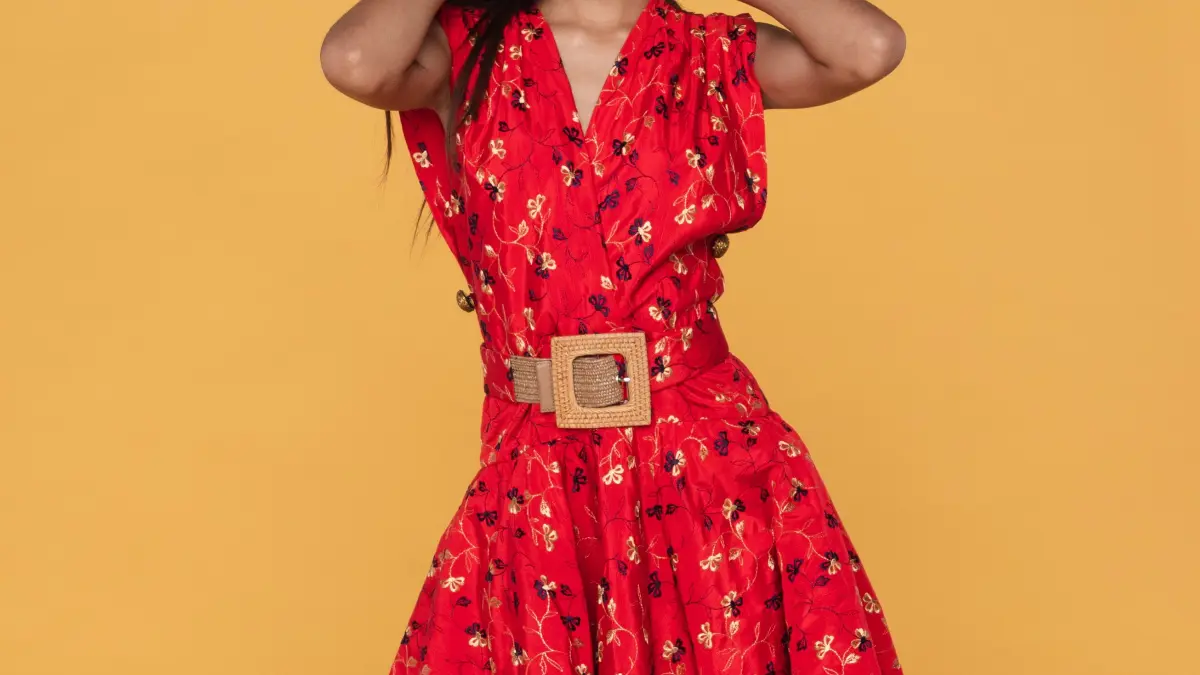After failing to defend a copyright lawsuit against her, the actress is ordered to pay only minimum statutory damages. Did Vergara just get lucky, or is default a smart litigation strategy?
Stop me if you’ve heard this one before: Famous celebrity has her photo taken by a member of the paparazzi. Celebrity then posts that image on her Instagram page. Photographer files a lawsuit against celebrity seeking damages for copyright infringement. Celebrity hires a lawyer to defend the case, but ultimately pays photographer a financial settlement to avoid the uncertainty and expense of litigation. Lather, rinse, repeat.
Jennifer Lopez, Katy Perry, Amy Schumer, Justin Bieber and LeBron James are all members of this “I got sued for posting a photo of myself of social media” club—a club that’s frankly getting less exclusive all the time. In a remarkable display of sticktoitiveness, Gigi Hadid has been sued for copyright infringement three different times. She’s won one of these cases, settled two others, and presumably paid pricey legal bills in all three.
Is it possible that these celebrities are going about it all wrong? A brand new ruling against “Modern Family” star Sofia Vergara raises some interesting questions for lawyers and clients on both sides of these cases. Let me explain.
Brewer v. Vergara
The Photo
In March of last year, professional photographer Clint Brewer took a photo of Sofia Vergara walking into rehearsals for her judging gig on “America’s Got Talent.” Brewer licensed the photo to the Daily Mail, which noted in its accompanying article that Vergara was wearing $27 ripped jeans from her Walmart collection.

A few days later, Vergara posted the photo on her Instagram account, to be seen by her family, friends, and 21 million other followers. She cropped the sides of the image, which also removed Brewer’s copyright notice from the gutter credit in the bottom left hand side:

In addition to tagging Walmart in the photo, Vergara posted a caption that read “What else would I walk into @agt wearing? 💙🙌🏻🌟 #sofiajeans.”
The Lawsuit
In October, Brewer hired notorious photography lawyer Richard Liebowitz to file a copyright infringement lawsuit against Vergara as well as her company, Sofia Vergara Enterprises. (Liebowitz has since been suspended from practicing law in New York pending an investigation into disciplinary charges against him by the Southern District of New York’s Grievance Committee.)

In his complaint, Brewer alleged that the defendants published his photo in order to promote Vergara’s clothing brand to her millions of Instagram followers, and that the photo received over 263,000 likes on Vergara’s account. Brewer alleged a cause of action for copyright infringement, seeking up to $150,000 in statutory damages for what he claimed was the willful infringement of his photo. He also asserted a separate claim for violation of section 1202 of the Digital Millennium Copyright Act, based on the cropping of his photo credit. (As I discussed in a recent post, section 1202 prohibits the knowing removal or alteration of “content management information” with the intent to conceal infringement.)
The Default
So far, the story isn’t much different than that of the numerous other celebrities who’ve been sued for posting photos of themselves on social media over the past few years. But here’s where it veers off course: Brewer’s attorney (at this point he’s represented by one of Liebowitz’s colleagues) served the defendants at the address of Vergara Enterprises’ New York registered agent for service of process. But neither of them responded to Brewer’s complaint—or even made an appearance in the lawsuit.
While unschooled defendants may decide to ignore a summons and complaint filed against them, it rarely happens with sophisticated companies, let alone celebrities with substantial assets. Even if a defendant who plans to contest jurisdiction or claim another defect unrelated to the merits of a lawsuit will typically hire a lawyer to make a special appearance for this purpose.
And Vergara certainly isn’t a stranger to litigation. Several years ago, she was the plaintiff in a $15 Million false endorsement lawsuit against a company she claimed was using her likeness to promote its business. (The case later settled for an undisclosed amount.) And earlier this month, Vergara won a long-running battle over her frozen embryos, which has played out in courts in both Louisiana and California over several years.
To be clear, I have no idea whether Vergara or her representative knew about Brewer’s copyright infringement lawsuit and made a conscious decision not to appear, or if they weren’t aware that they’d even been sued in the first place. But either way, they didn’t respond, which resulted in the clerk taking the defendants’ default.
The Motion for Default Judgment
Brewer then filed a motion for default judgment, setting forth the facts of the case and asking the court to award damages in his favor. (Even when a defendant has not appeared in court to contest a lawsuit’s factual allegations, a copyright plaintiff is still required to demonstrate his legal entitlement to damages and to provide proof of the claimed amount.)
Notwithstanding the allegations in his complaint seeking up to $150,000 in statutory damages, Brewer’s motion for default judgment (read here) requested the much more modest sum of $5,000 in statutory damages, plus costs and attorneys’ fees.
Typically, plaintiffs and courts will use actual damages (such as the value of a lost license fee) as a benchmark from which to calculate an appropriate statutory damages award. While courts have discretion in the amount of statutory damages they can impose, statutory awards have typically landed in the range of two to five times actuals in recent years.
In his motion for default judgment, Brewer didn’t offer up any licensing history in connection with his image (such as the amount paid for its use by the Daily Mail). While some courts have not required this type of proof, its absence may result in a lower statutory award unless a defendant’s conduct is particularly egregious. That said, a judge has wide latitude to award damages of between $750 and $30,000 per infringed work, even if the court does not find the defendant’s infringement to be willful.
The Court’s Ruling
In a February 18 order on Brewer’s motion (read here), Southern District of New York Judge Alvin Hellerstein exercised his discretion and awarded the lowest amount of statutory damages possible—$750. In addition, the judge also declined Brewer’s request for attorneys’ fees.
As a result, Vergara—unless she seeks to set aside the default altogether—will escape a potential six figure copyright infringement lawsuit with a single payment of $750. And not only won’t Vergara have to pay the plaintiff’s attorneys’ fees (the judge denied Brewer’s request), she won’t even have to pay her own lawyer’s fees (because she didn’t hire one to defend her). If you’re going to have a judgment entered against you in a copyright case—default or otherwise— this is about as good as it gets.
Brilliant Strategy or Lucky Break?
I don’t know whether the outcome in Vergara’s case was a product of a deliberate strategy behind the scenes, or whether she just lucked out. But it certainly raises an interesting question: are defendants faced with these types of a claims better off simply ignoring them and deliberately defaulting, as opposed to mounting a legal defense or paying an early settlement?
It would be difficult to conduct any sort of definitive study comparing damages on default judgment to the typical settlement payments made by defendants, because those settlements are almost always confidential. However, having defended a number of photography cases brought by Liebowitz and his ilk, I can offer up some informal thoughts.
First, there’s a often a big difference in outcomes in single-image cases (especially those brought against individual defendants who post photos of themselves on social media) and cases involving a media defendant’s systematic use of multiple images of other photographic subjects. Even if an individual celebrity is arguably posting a self-image for promotional purposes (as in Vergara’s case), there are a number of additional potential defenses available to defendants in these types of cases (including claims to an implied license or even joint authorship) that tend to lower their settlement value.
On the other hand, if you’re publishing a photo of someone else in order to promote a commercial venture or as part of your ordinary business operations (such as running a media site), you should typically expect to pay a higher settlement in these cases. While a fair use defense may be applicable in certain instances, this isn’t always true—as I discussed last year in a case involving clothing designer Elie Tahari’s unauthorized use of a candid photo of model Linh Niller on the company’s Instagram page.
As a practical matter, single image cases can also usually be settled more cheaply than those involving multiple images because they offer a much lower return on investment for the plaintiff’s lawyer. It simply doesn’t make sense for either side to spend tens of thousands of dollars on legal fees that may well exceed the amounts at issue. Indeed, most settle before litigation is even filed.
But when single image cases are litigated and do go to judgment, awards have been all over the map. Courts have awarded the minimum $750 in a handful of cases, typically those involving first-time offenders in situations in which the plaintiff failed to provide evidence of an appropriate license fee. But courts have also imposed single-photo awards of $2,500, $5,000, $20,000 and the maximum $30,000 for non-willful infringement. When you add on the discretionary attorney’s fees that a court may also award in favor of the plaintiff, a defendant is looking at a hefty bill. And if there is a legitimate chance of a willfulness finding, the risk of rolling the dice can be astronomical.
While I have no way to prove this, I also think that the “Liebowitz factor” may have played a role in the outcome of the Vergara case. The lawyer’s reputation has made him pretty legendary among New York federal judges, and while a firm associate is handling the Brewer case in light Liebowitz’s suspension, he’s still acting on behalf of the “Liebowitz Law Firm.” It’s certainly possible that a realization that Liebowitz would be the ultimately beneficiary of a large award affected the judge’s decision.
At the end of the day, a decision to default is fraught with risk. Some defendants may choose to take on this risk, while others would prefer the certainty and finality that comes with litigation or settlement. Defendants considering defaults should also keep in mind that, unlike settlements (which are typically confidential and don’t involve an admission of liability), default judgments are public. They could result in heavy-handed collection efforts, including property liens and wage garnishments, not to mention the reputational hit that may accompany a public judgment.
So what do you think? Should a copyright defendant ever consider strategically defaulting? Let me know in the comments below!






